IS HOLLYWOOD ENTIRELY OFF-BASE WHEN IT COMES TO SURVIVAL MOVIES?
Many of us enjoy survival-oriented films. With some of them, it gives us a chance to wargame, in a manner of speaking, and allow us to see how some situations may play out. There are other movies that seemingly share vital pieces of survival knowledge and techniques.
Let’s take a look at three films that fall into the survival movie genre or niche. The summaries will be brief and will gloss over quite a few details, due to space constraints as well as an attempt to avoid spoilers for those who’ve not seen the movies yet. But, the larger concern for us will be, is there anything in these films that we can turn around and use in the real world?
SURVIVAL QUEST (1988)
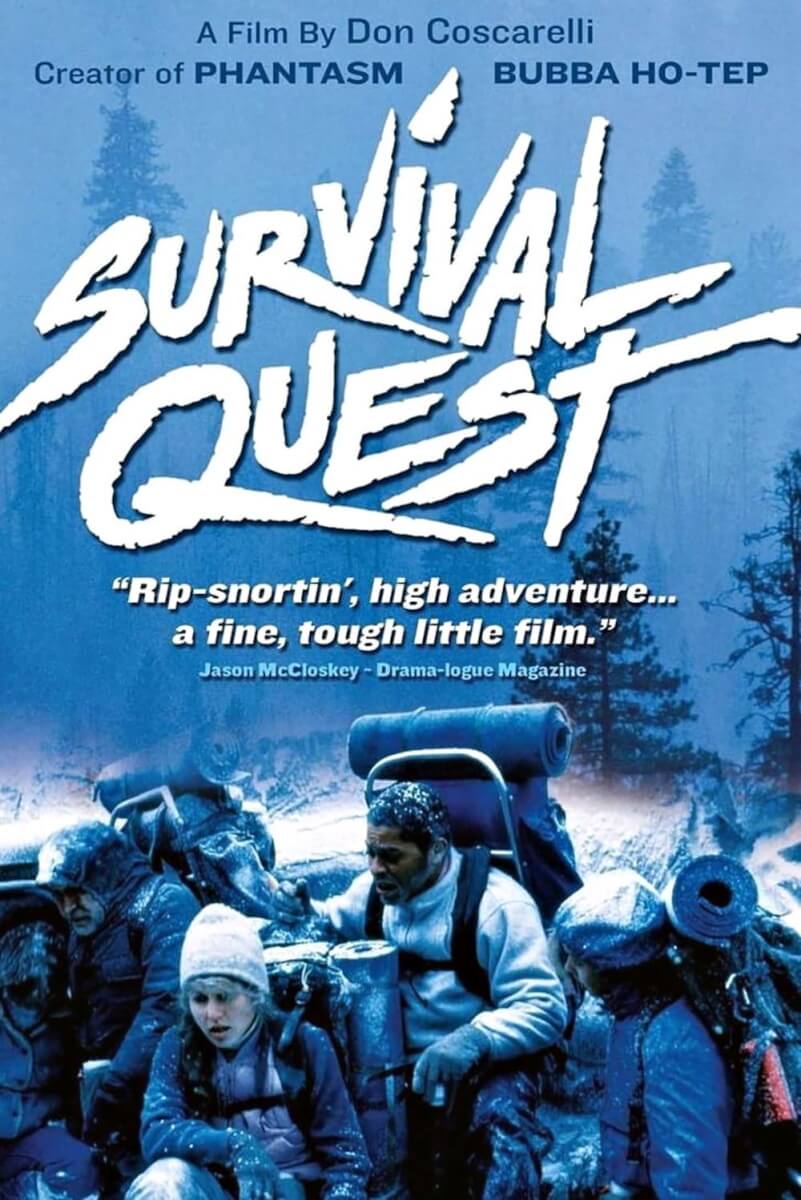
Summary: This is the oldest, and probably the least known, film on our list. Hank Chambers, played by Lance Henriksen, is a soft-spoken wilderness survival instructor. His school is sort of like Outward Bound, where he takes small groups up into the mountains and teaches them about shelter building, wild edibles, and such while also helping them become leaders. A few of his students in the film are fairly recognizable, including Dermot Mulroney and Catherine Keener.
Not too far away is another survival school, this one run by tyrannical Jake Cannon, played to the hilt by Mark Rolston. Where Hank teaches his students how to live with nature, Jake takes a much more hardcore approach, teaching his students to conquer nature as though it were an enemy combatant. He also leads sessions on knife fighting and related skills. One of his students, named Raider, is particularly enthralled with the class.
When they discover that Hank is leading his students through the area, Jake’s Blue Legion, as the school is called, begin stalking them. At one point, Raider takes it to the next level, taking a little detour away from the rest of his class and shooting Hank, seemingly killing him. When Raider brags to Jake about this, Jake gets angry and begins beating him. Raider, in turn, pulls a knife and, using a move that he’d learned in class, stabs Jake and leaves him for dead. Catching up to the rest of the Blue Legion students, he tells them that Jake was killed by Hank’s students.
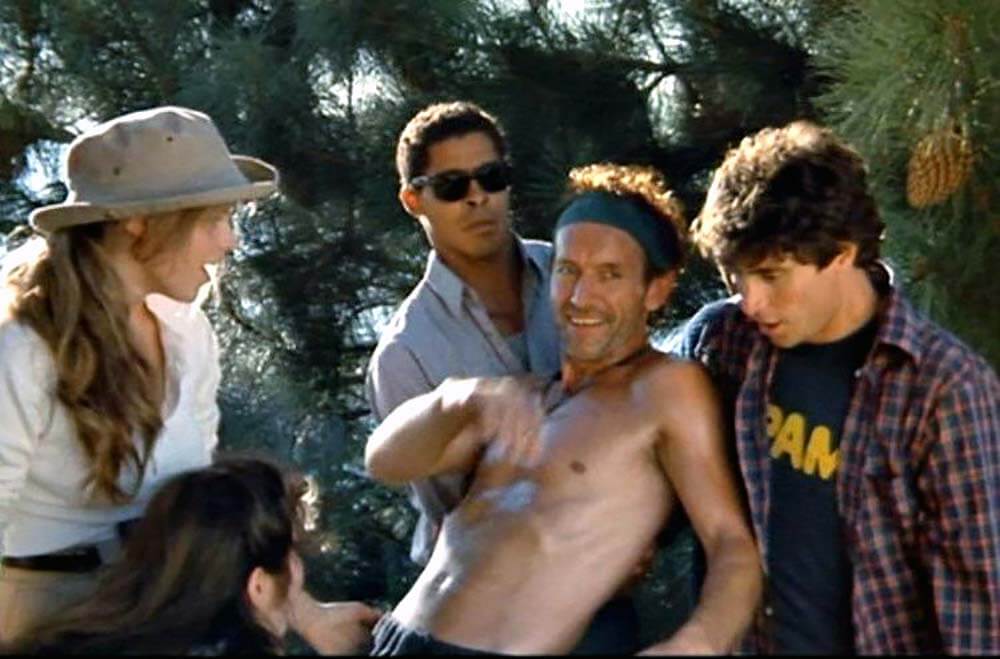
Blue Legion declares war on Hank’s students, chasing them across the mountain as they race to get to an airstrip and find help. They’ll need to remember every trick and technique Hank taught them if they’re going to make it.
Quote: “Fire is nature’s cleanser.”
Verdict: There isn’t a whole lot of survival information that is detailed in the film, but Hank’s students are shown to have some degree of knowledge in wild edibles and navigation. In one segment, they’re forced to build a snow shelter to survive a blizzard near the top of a mountain. All in all, it is a fairly believable film, at least as far as the characters and their actions.
THE EDGE (1997)
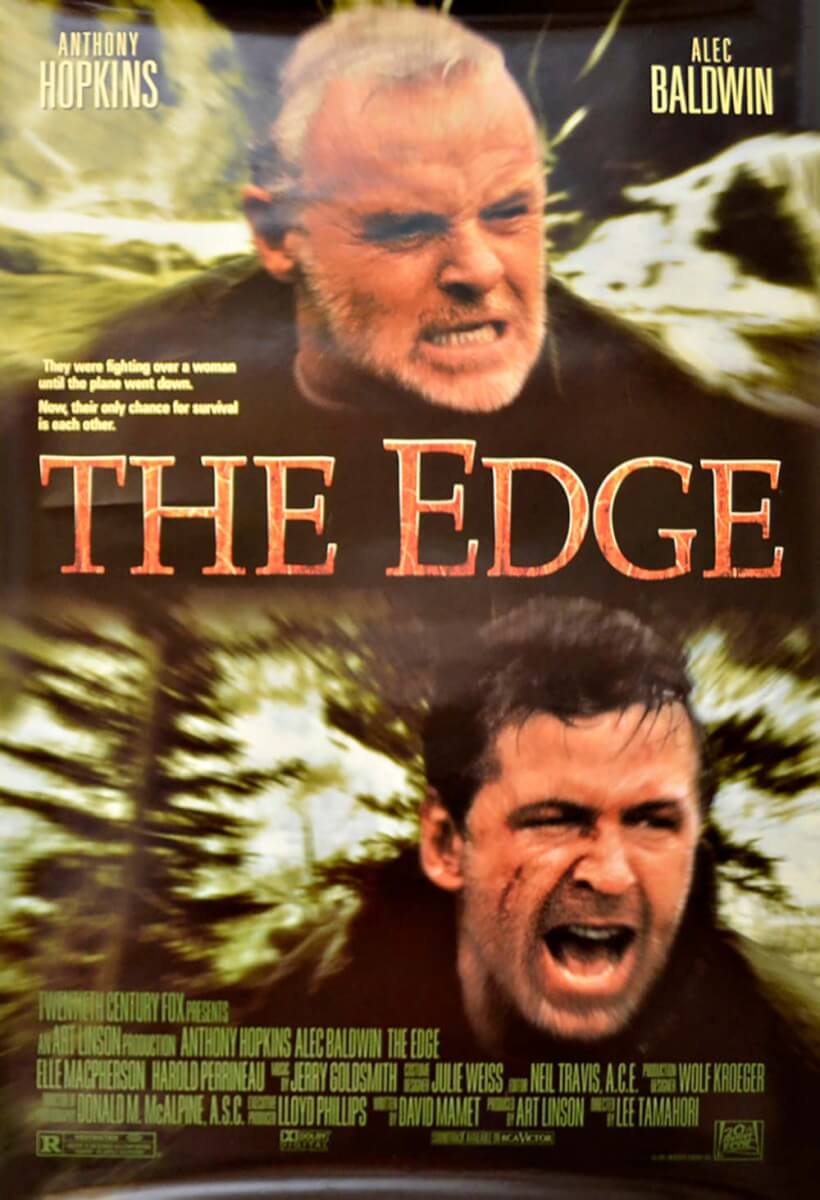
Summary: Charles Morse (Anthony Hopkins) is a billionaire. He’s also incredibly intelligent and well read. His wife, Mickey (Elle Macpherson), is a model and they’ve traveled to Alaska with a small team for a photo shoot. Among them is photographer Bob Green (Alec Baldwin), who is shown to be very close with Mickey.
They set up at a hunting lodge as their base camp and the owner there cautions them about leaving food uncovered, as there are bears in the area. That evening, there is a surprise birthday party for Charles and he’s gifted a nice pocketknife, among other things. He also has been reading a wilderness survival manual in preparation for the trip.
Charles, Bob, and Bob’s assistant, Stephen, hop into a puddle jumper to go further north in search of a hunter who they feel will be perfect for some of the photos. Their plane runs into a flock of birds in the air, causing it to crash into a lake. Charles, Bob, and Stephen make it to shore. They realize that, since this was a last-minute trip to find the hunter, nobody knows where they are and it will be up to them to find their way back on foot.
Charles begins to use survival techniques he learned from the book he’d read, including magnetizing a needle and putting it on a leaf floating in a still pool to find north. They also make use of his knife, carving sharp sticks into spears for fishing. While working on the spears, Stephen accidentally cuts his leg badly. They are able to bandage him up, but the smell of blood attracts a large Kodiak bear. This doesn’t end well for Stephen.
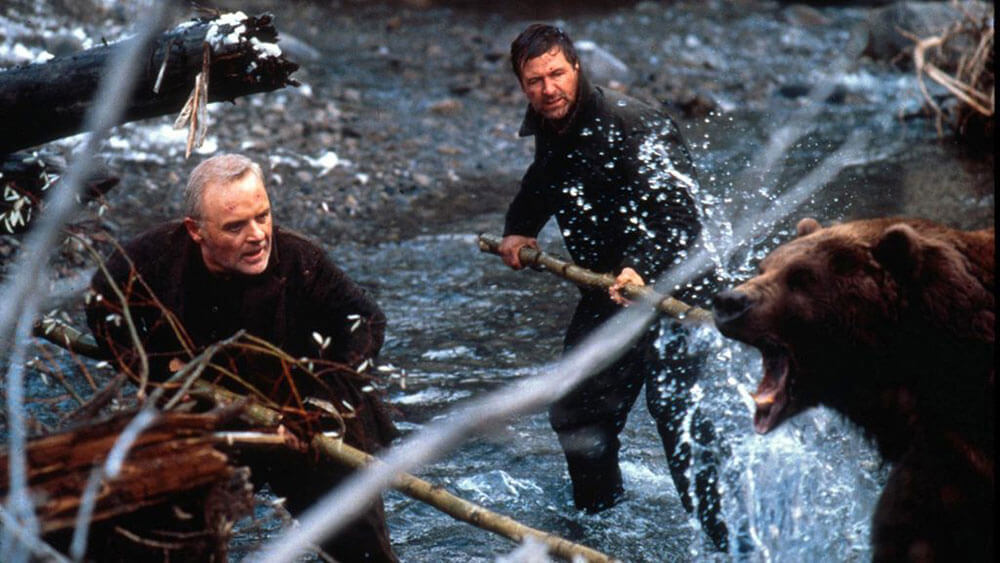
Bob and Charles continue in their quest to find a way back to the lodge, always relying on Charles’ apparently photographic memory and the survival techniques he found in the manual. At the same time, they are being hunted by the bear.
At one point, they stumble on a small hunting cabin and are able to make use of the limited supplies inside. But, as one might expect, this also ends up going awry. Eventually, they decide they need to go head-to-head with the bear if they’re going to survive.
Quote: “What one man can do, another can do.”
Verdict: The Edge is a taut thriller, with many wilderness survival lessons scattered throughout, if you’re paying attention. One aspect that is often overlooked in survival manuals but that is showcased here is the effect stress can and will have on people who are facing a disaster or crisis. While we’d like to think we’ll be stoic and filled with wisdom, the reality is that people don’t tend to be their best selves the whole time.
CAST AWAY (2000)
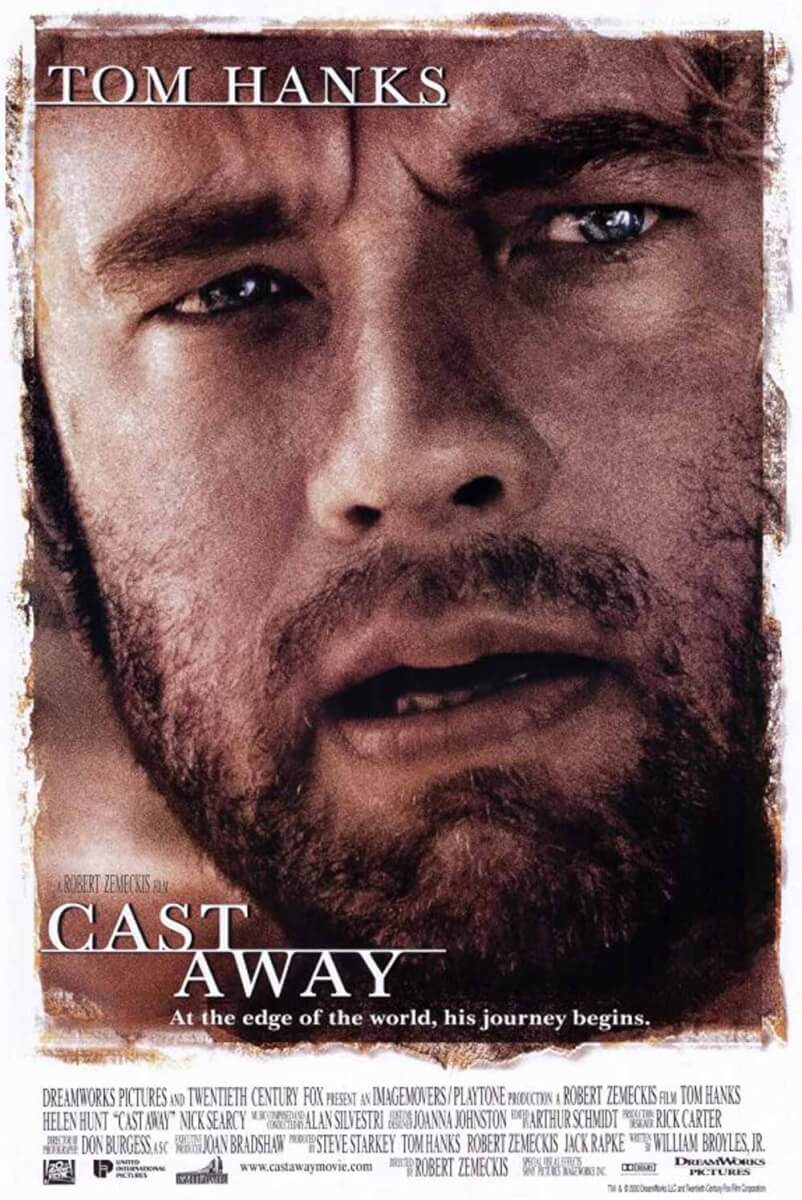
Summary: Chuck Noland, played by Tom Hanks in a performance that garnered him an Oscar nomination for Best Actor, is a systems analyst for FedEx. His primary focus is on improving productivity and he travels the globe, visiting FedEx hubs to work with them on reducing delays. On one of these trips, his plane goes down over the Pacific Ocean and he washes ashore on a small island.
Over the next few days, several packages turn up on the beach, along with the dead body of one of the pilots. Chuck buries the pilot and opens most of the packages, finding an assortment of things from ice skates to a volleyball. It takes some time, and no small amount of blood, sweat, and tears, for Chuck to learn how to make fire, find water and food, and learn how to stay warm and dry.
“…what you see depicted on the silver screen is more the result of imagination than it is centered on realism.”
He spends four years on the island, gradually adapting to the situation and the environment. Many of the items he found in the packages are repurposed, such as using ice skates as cutting implements.
One day, part of a porta potty washes ashore and he decides this is the last piece to the raft he’s been planning. The problem has always been that rafts can’t seem to get beyond the incoming surf as he lacks the strength to just power through by paddling. He fashions the porta potty into a makeshift sail of sorts in hopes that it will provide the added oomph needed.
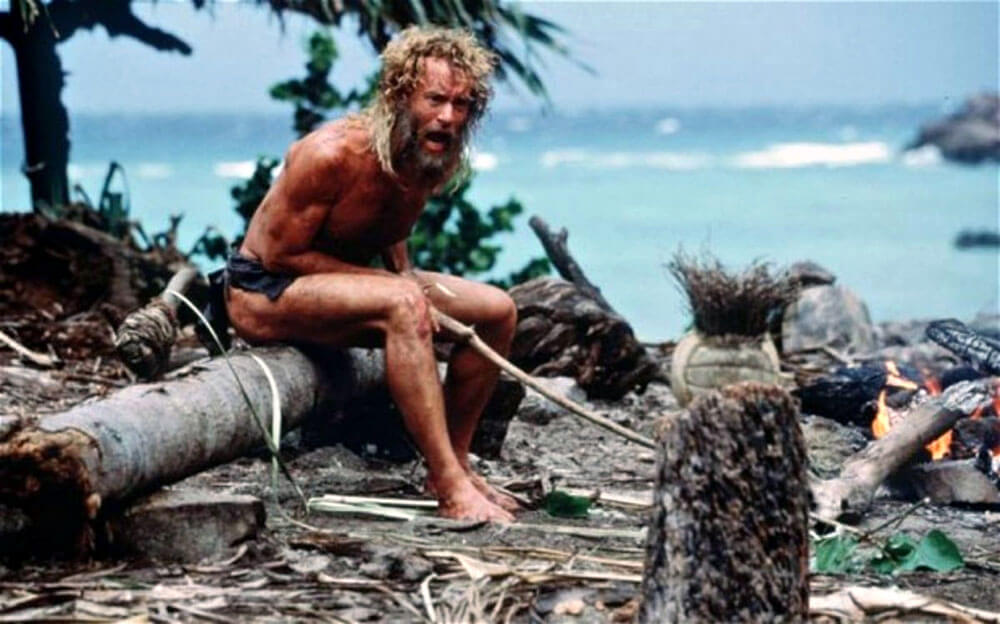
Even if he makes it beyond the breakers, there’s no guarantee he’ll ever find civilization again.
Quote: “I’ve got to keep breathing because tomorrow the sun will rise. Who knows what the tide will bring in?”
Verdict: From a survival education standpoint, where this survival movie really shines is in the depiction of improvising solutions. Everything Chuck found in the packages was put to use in some way. For example, video tape cassettes are opened and the tape woven into rope. He also showcases how difficult it can be to use primitive methods to get a fire going, and just how jubilant many are the first time they make it work.
FICTION VS. REALITY
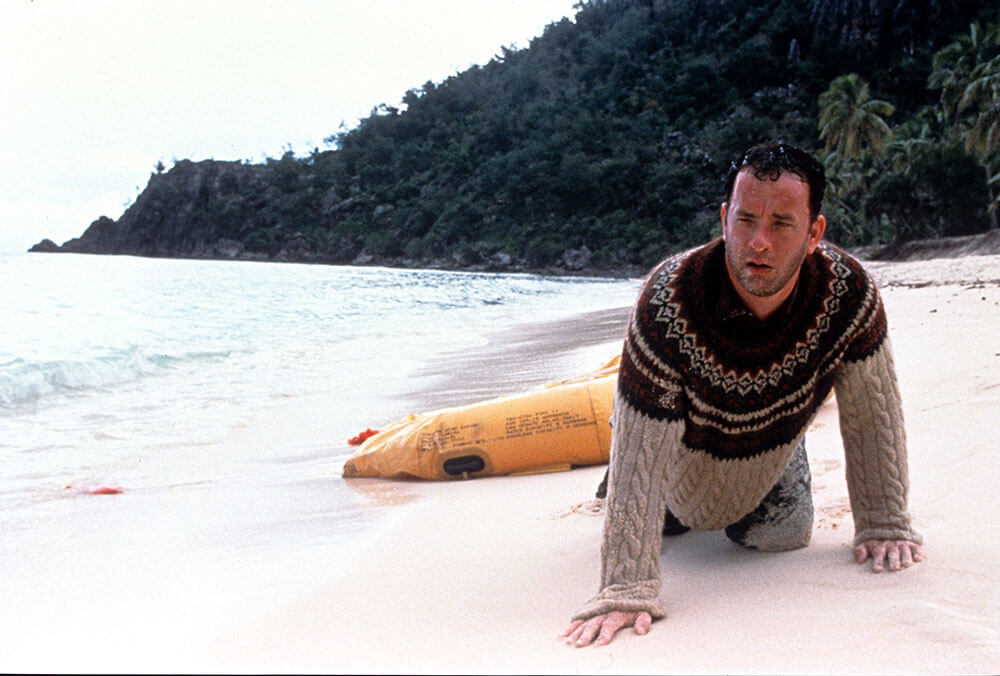
It is important to understand that even though screenwriters and novelists will often conduct extensive research when writing their stories, they are under absolutely no obligation to ensure every detail described is precisely accurate. There is this thing called suspension of disbelief, which means that the audience is expected to temporarily set aside logic or critical thinking in favor of just enjoying the story.
This means that what you see depicted on the silver screen is more the result of imagination than it is centered on realism. This is also true of many so-called reality shows, where producers are the ones who decide what you actually get to see out of countless hours of video footage.
A version of this article first appeared in the September 2022 issue of American Outdoor Guide Boundless.

